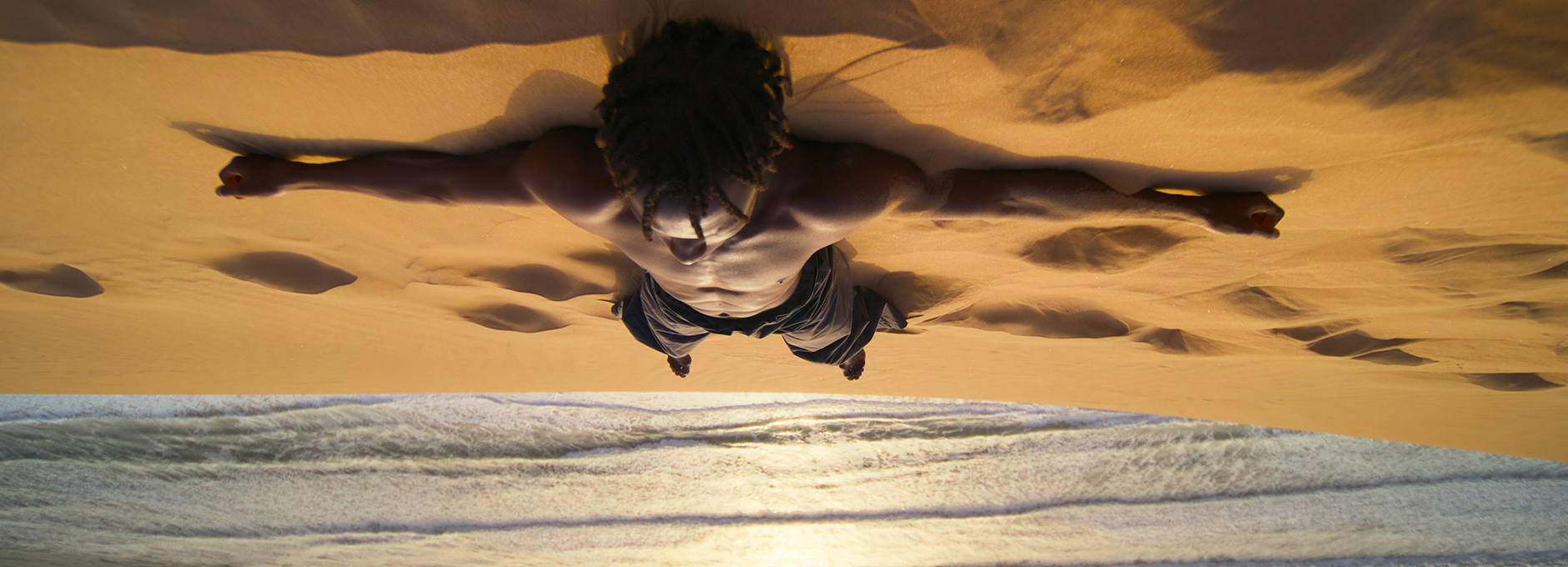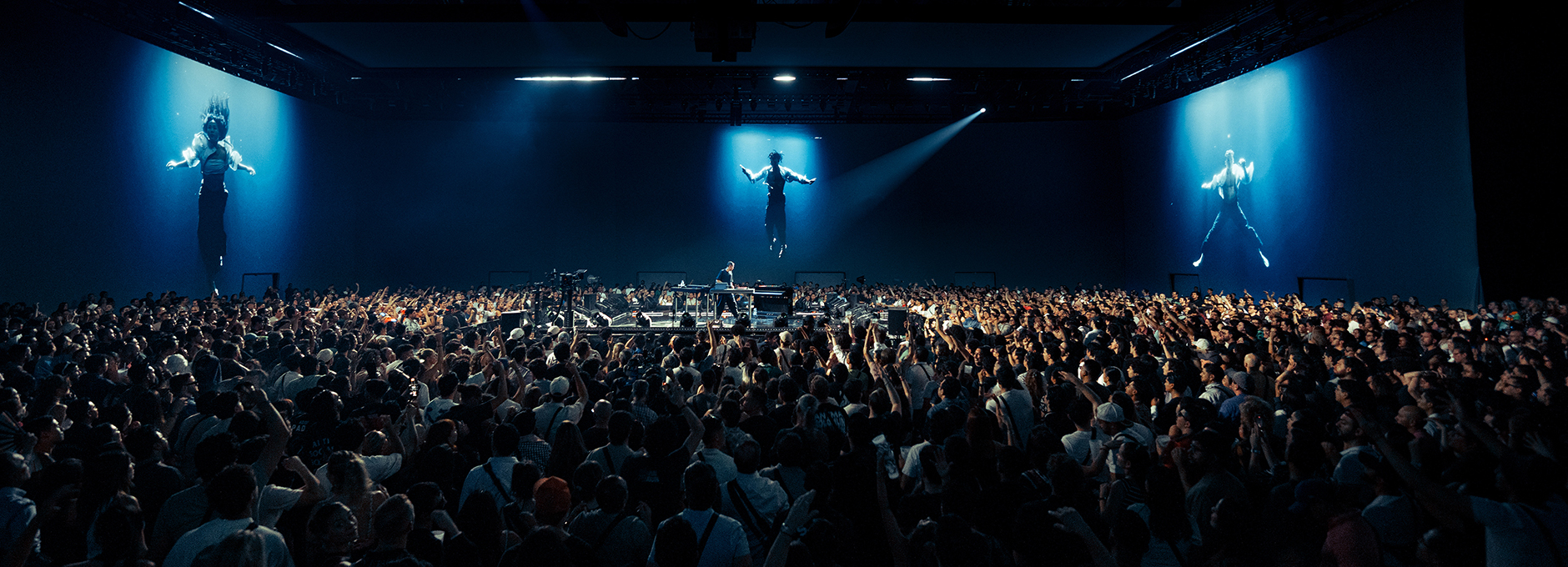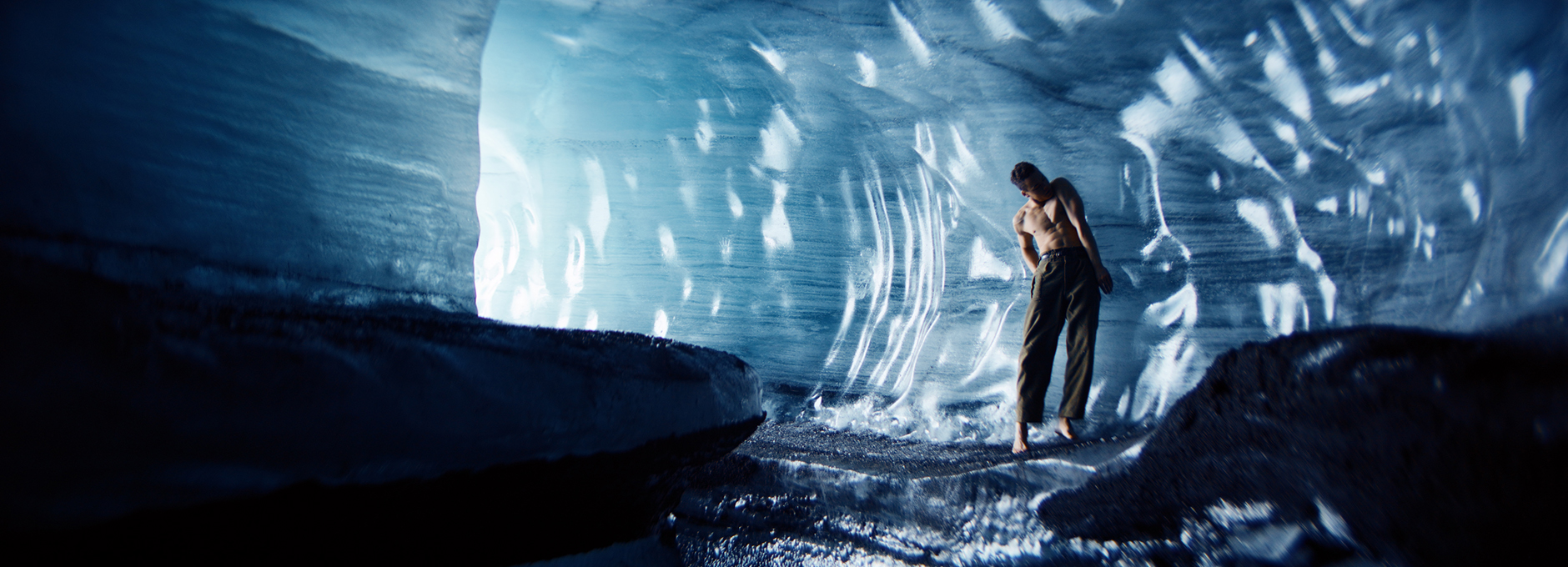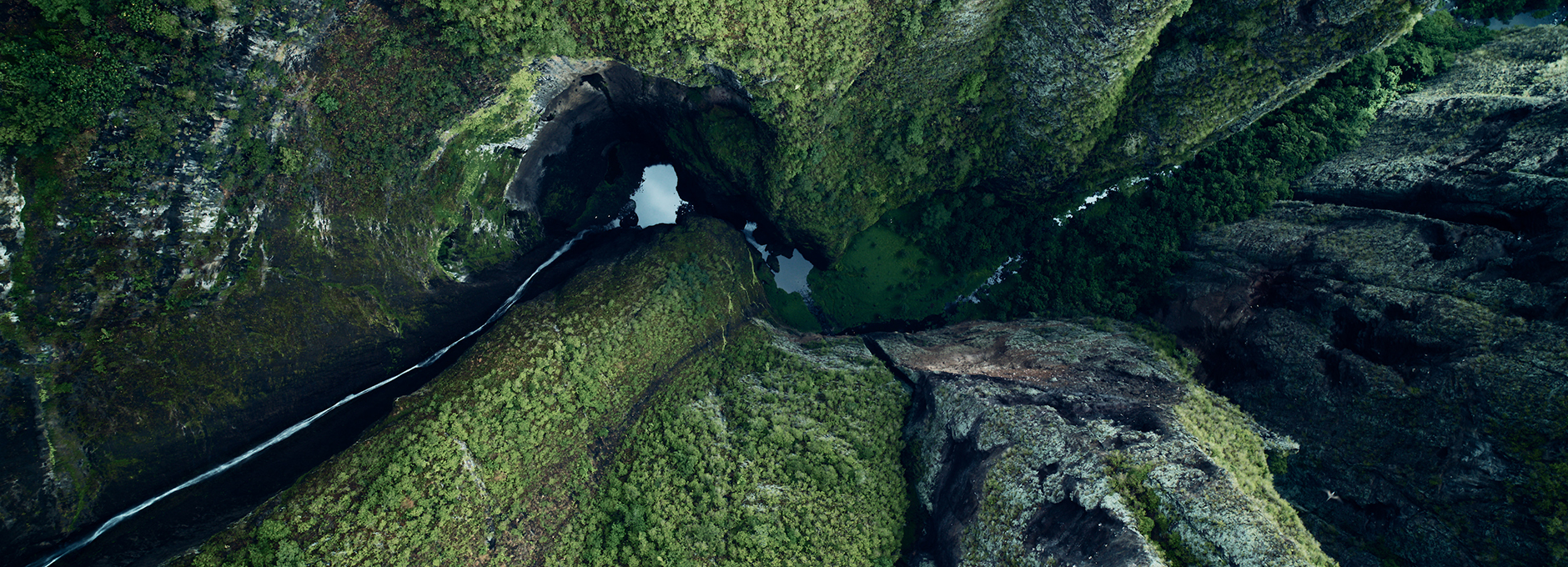Case Studies
Behind the scenes of Cercle Odyssey
A discussion with director Neels Castillon, cinematographer Eric Blanckaert and colourist Sylvain Canaux.
Touring this Spring across three cities, Cercle Odyssey is a groundbreaking audiovisual experience that blends music, nature, and cutting-edge technology into an immersive, multisensory journey. Created by the renowned French music platform Cercle, known for putting together breathtaking live performances in iconic locations around the world, the Odyssey project takes this concept further by integrating 360° visuals, surround sound, and interactive elements.
Directed by Neels Castillon and produced by Motion Palace, the project brings a new perspective to live performance by integrating choreographed narratives inspired by the Ancient Greek myth of Ulysses.
Set in dome-like venues, cinematographer Eric Blanckaert captured the visual essence of the Odyssey, while colourist Sylvain Canaux at St Louis Post-House in Paris ensured a rich and cohesive palette for each of the unique locations.
The myth of Ulysses
The works of ancient Greek poet Homer—including The Odyssey and The Adventures of Ulysses—served as a starting point for director Castillon when imagining the scenes for Cercle Odyssey.
“I envisioned four different Ulysses characters, each cast far from home, each navigating a world that feels both foreign and deeply symbolic,” explains Castillon.
The only time the audience encounters a city is at the very end of the show, when the Ulysses characters return home. Until then, Cercle Odyssey’s main character is nature.
“We wanted to celebrate the power of nature,” continues Castillon. “With 50-metre-wide screens, every detail comes alive and proportions shift. It reveals just how small we are in the face of nature—and that perspective is everything. It repositions us within our environment. For me, that feeling is both humbling but also profoundly calming—even euphoric. Combined with music, it allowed us to craft images of great emotional power.”
A journey rooted in colour
For Castillon, colour was a very early and significant consideration.
“My work is very visual, so colour is incredibly important to me,” says Castillon. “I’ve always believed deeply in the emotional power of colour.”
“When I began thinking about the monumental space of Cercle Odyssey, I started imagining how we could create a visual journey rooted in colour,” says Castillon. “I decided I would scout locations based on the natural colour palette they offered—gold for the desert, white for the Arctic, deep blue for the ocean, and lush green from a primordial forest.”
Using only the colours that exist in nature gave Castillon a rich and elemental palette, allowing them to explore different emotional tones throughout the show.
To achieve his colour goal, Castillon turned to a colourist he deeply trusts.
“I work with Sylvain because he’s truly passionate about what he does. He genuinely loves his craft. In the calm of the grading suite, far from the chaos of the shoot, it becomes a real artistic experience. I get to rediscover the images with him, see them in a new light—sometimes quite literally.”
Colourist, Canaux, adds, “I had the opportunity to work with Neels and Blanckaert before, so the process was seamless. Eric is exceptionally precise in his approach, while Neels is highly invested and passionate about the colour process. The collaboration is quite natural.”
Crafting a 360° cinematic experience
Cercle Odyssey blends live music, myth and nature in an immersive setting, and the 360° projection format influenced many decisions in production and post.
“The space is a perfect square, with five giant screens,” explains Castillon. “Front, back, left, right, and even the ceiling—surrounding the audience and the central stage. From the very beginning, we had to think differently. Every action had to be conceived with this immersive environment in mind. If something happens in front of the viewer, what’s happening behind them? Or to the sides?”
For the team behind the scenes, this required a lot of experimentation to understand what truly worked.
“There needs to be a visual and emotional coherence— through colour, through movement—so that the audience feels truly immersed,” explains Castillon. “The moment things become too chaotic or lose a sense of harmony, it starts to feel like just another projection.
“But when every screen is thoughtfully considered and all the elements come together in harmony, the effect is extraordinary. Suddenly, you’re no longer watching—you’re inside an infinite universe.”
The shoot
For cinematographer Eric Blanckaert, the aspect ratio imposed by the 360° 8K screen setup was a real challenge from the outset.
“I had never framed images this wide before,” comments Blanckaert. “Neels and I had to adapt with even more minimalist compositions and camera movements than we were used to.
“We had to play with the scale of the shots across the different screens, both to immerse the audience in the grandeur of the landscapes and to capture the emotions of our characters through much tighter framing.”
When it came to lighting, Blanckaert’s goal was to achieve maximum contrast without compromising the richness of colours.
“This meant shooting as often as possible with a low, powerful sun—particularly in the vast desert landscapes,” explains Blanckaert. “For the studio work, the aim was to move away from naturalism and embrace lighting and colour effects that felt more like dreams or nightmares.”
Blanckaert delivered 8K images in an ultra-wide aspect ratio with anamorphic lenses.
“I chose to pair the RED Raptor X with Atlas Mercury lenses,” says Blanckaert. “This allowed us to make full use of the sensor in anamorphic mode while still shooting at 100fps. The sensor’s dynamic range is remarkable, and I always ensured the highlights were protected so we’d have maximum flexibility during colour grading.”
In the colour suite
“Neels is meticulous when it comes to colours, ensuring that the audience is immersed in a colour bath, while maintaining a cinematic aesthetic,” says Canaux. “Despite his conceptual approach, this method allows for experimentation as soon as the final results align with his vision. We often bring in materials or ideas, such as film stills from shooting, as references to help him develop his concept.”
“In post-production, I worked closely with Sylvain to bring our vision to life,” adds Castillon. “I wasn’t looking for realism. I was chasing emotion. That sometimes made it hard for him to pin down exactly what I wanted—but he has a sharp eye and a lot of experience.”
“Sylvain has also developed a whole set of advanced colour and image correction techniques that allow us to shape the image in very precise and nuanced ways. He always finds solutions, no matter how complex the challenge. He’s a key collaborator for me—someone I trust completely to help bring the film to life.”
“Not every director stays closely involved during the colour grading process—but for me, it’s one of my favourite parts of the journey. I’m almost always there! I find it fascinating.
Testing
For Canaux, an immersive projection for a concert was a new concept, so testing was crucial.
“After the initial tests, we had to make a few adjustments,” says Canaux. “The perspective and proximity were so extreme that even minor details, such as slight noise or textures, became crucial. All 360° drone scenes required synchronised grading, so I used linked cursors and linked layers to ensure edge correlation, and to treat them as uncut scenes with keyframes.”
“The viewing conditions differ from traditional theatre, too,” he adds. “We had to refine the overall balance—particularly keeping detail in the lowlights. However, dual 8K laser projection is incredibly powerful, even in the most challenging viewing conditions.”
Another challenge for Canaux, which came to light during testing, was controlling the texture.
“The combination of the RED camera with the grade was a bit noisy in less exposed scenes, such as in the forest or underwater,” recalls Canaux. “To avoid distracting the audience, we decided to remove most of the texture.
“After a few tests, we found that Neat Video was the simplest and sharpest solution, even though the rendering process was de-multiplied, especially for these high-resolution images. We had to be particularly careful with it, and we resampled the denoise profile many times through the same scenes.”
Baselight
For Canaux, it was important to have a set of tools dedicated to each step of the colour correction process, which he found in Baselight.
“Chromogen was the foundation of the looks, helping me define an overall aesthetic that is soft and controlled,” explains Canaux. “When I need to push the boundaries, Curves assist me in going a bit further because they work fantastically with Chromogen.
“X Grade is incredibly helpful and can’t be removed from the equation, because it provides both visual and precise corrections, and like Curves, it is a perfect companion to Chromogen.
“And of course, Base Grade and Film Grade are essential for balance and colour correction,” adds Canaux. ”As a secondary grading tool, the control that the new Halation tool gave us was particularly helpful to give to the footage this gracefulness.”
Honouring unique locations
Each location in Cercle Odyssey has a distinct emotional resonance, and Canaux enhanced and differentiated the unique palettes of each of them.
“I collaborated with Neels, gradually introducing more intensity, presenting him various options, including tinting and adjusting the contrast, all while maintaining a subtle approach,” says Canaux.
Namibia
“The process truly began in Namibia, an incredible location with breathtaking golden sand and ochre, complemented by the dark skin of the dancer,” says Canaux.
“We finished Namibia first, using Chromogen to infuse the look with richness and vivid colour, all while maintaining control through highlight bleach and colour density,” explains Canaux. “A curve enabled us to further enhance the cinematic quality, introduce a touch of coldness in lowlights and/or warm tones in the highlights. And gradients helped us bring back the sky, which is often white and foggy at these latitudes.”
“The final step involved spatial processing. We achieved elegant halation, enhanced medium contrast when necessary, and boosted shadows to preserve dynamics and details, particularly in drone shots,” adds Canaux.
French Polynesia
French Polynesia offered a more diverse range, featuring golden hour beaches followed by a dense green forest and a secluded beach encircled by dark black mountains.
“In French Polynesia, I applied the same logic to the Marquise beach, but I had to control the skintone in relation to the sunlight,” says Canaux. “The work in the native forest aimed to maintain a strong, vibrant green with an elegant quality. The X Grade tool in Baselight provided the precise control we needed to achieve this.”
Bolivia
“Bolivia’s salt lake was an exceptionally surreal sight,” says Canaux. “We had deep primary blues in the shadows with soft cyan in the highlights, giving the scene a strong identity.
“The light reflected on the water and created a beautiful glow on the skintones. Gradients helped us rebalance the contrast of certain scenes, allowing the subject to blend seamlessly between the ground and the sky.”
Iceland
Iceland presented a less consistent landscape, characterised by fog, storms, bright sun, as well as a surprising ice cave.
“Iceland was much more varied,” says Canaux. “It was challenging in the storms because we had to bring back depth and contrast, while also infusing richness into the vast white immensity.
“Since we had experimented with this concept in a previous project, I already had some insights. However, the diverse weather conditions posed a greater challenge. The scene was handled using the same logic to keep the consistency, but it was entirely reworked due to the unique nature of the location.”
Revealing the beauty of nature
“In the end, I think we found a look that feels cinematic—not by enhancing nature, but by revealing its true beauty,” concludes Castillon.
“The entire experience was an absolute joy, and the images and choreography are incredibly beautiful,” adds Canaux.
The Cercle Odyssey went to three major cities this spring: Mexico City (April 23-27), Los Angeles (May 7-11), and Paris (May 28 – June 1).
“From the very beginning, we had to think differently. Every action had to be conceived with this immersive environment in mind. If something happens in front of the viewer, what’s happening behind them? Or to the sides?”
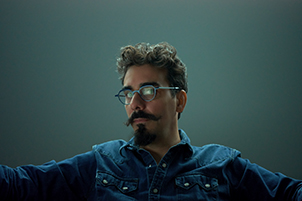
Colourist Sylvain Canaux
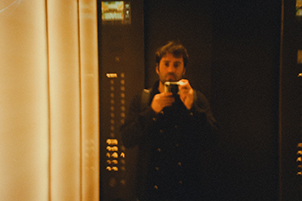
Director Neels Castillon




